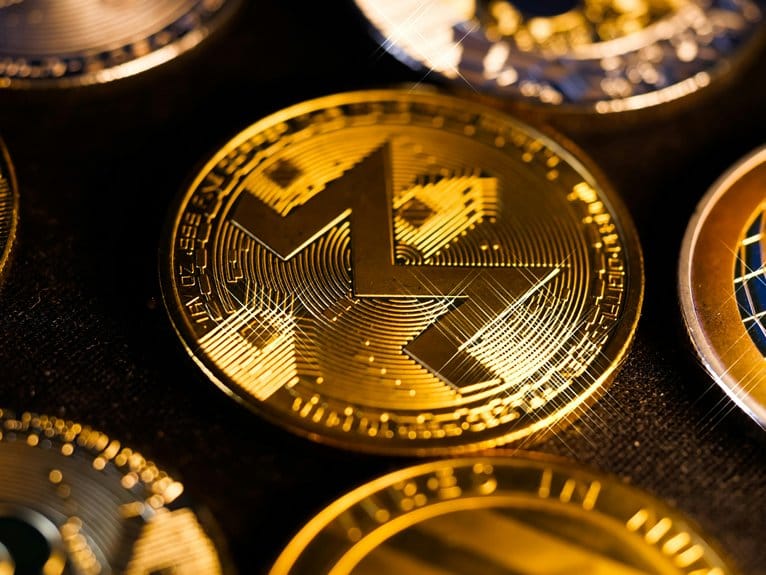Gaming guilds serve as cornerstone organizations within blockchain gaming ecosystems, managing digital assets worth millions and facilitating 30-40% of total economic activity. These entities have evolved from informal groups into sophisticated operations that provide structured player development, scholarship programs, and professional asset management services. Through revenue-sharing models and mentorship systems, guilds enable broader participation while achieving 40% higher earnings for scholars compared to independent players. Their impact extends to community building, governance, and market development, with a projected 35% CAGR in blockchain gaming between 2024-2028. The expanding influence of gaming guilds reveals deeper operational complexities and economic opportunities within the space.
Evolution of Blockchain Gaming Guilds
Blockchain gaming guilds have rapidly evolved from informal player groups into sophisticated organizations that bridge the gap between traditional gaming communities and decentralized finance (DeFi).
These guilds initially emerged as basic coordination mechanisms for play-to-earn games but have since transformed into complex ecosystems with multiple revenue streams and organizational structures.
The evolution has been marked by the implementation of decentralized governance systems, allowing guild members to participate in decision-making through voting mechanisms and proposal submissions.
Guild operations have expanded beyond collaborative gameplay to include structured player skill development programs and professional training academies.
Cross game integration has become a crucial feature, with guilds operating across multiple blockchain games simultaneously, diversifying their asset portfolios and revenue sources.
Modern gaming guilds now commonly issue guild specific tokens, creating internal economies that incentivize member participation and performance.
These tokens often grant voting rights and revenue shares from competitive events.
The organizational structure has evolved to include specialized departments for scholarship management, asset optimization, and tournament organization, reflecting the increasing sophistication of guild operations in the blockchain gaming space.
Economic Impact on Digital Gaming
The emergence of gaming guilds has fundamentally transformed the economic landscape of digital gaming, generating new revenue models and market dynamics. These organizations have created substantial economic opportunities by enabling players to monetize their gaming activities through scholarship programs, asset rentals, and revenue-sharing arrangements.
Analysis shows that guilds have expanded player demographics beyond traditional gaming communities, particularly in emerging markets where play-to-earn models serve as viable income sources.
The introduction of guild-based revenue models has catalyzed significant capital flow within blockchain gaming ecosystems. Studies indicate that major gaming guilds manage digital assets worth millions of dollars, facilitating transactions and creating secondary markets for in-game items.
This economic infrastructure has led to the development of specialized financial instruments, including guild tokens and yield-generating gaming assets. Data suggests that guild-mediated activities account for approximately 30-40% of total economic activity in leading blockchain games.
Furthermore, guilds have established sophisticated economic frameworks that include training programs, performance metrics, and optimization strategies, effectively professionalizing gameplay and creating sustainable economic ecosystems within digital gaming environments.
This systematization has attracted institutional investment and enhanced market stability.
Scholarship Programs and Player Empowerment
Gaming guilds have revolutionized player accessibility through scholarship programs that enable individuals to participate in blockchain gaming without initial capital investment. These programs typically operate through a revenue-sharing model, where guilds provide the necessary in-game assets while scholars contribute their time and skills, creating a mutually beneficial arrangement that has opened doors for players in emerging economies.
The implementation of structured player mentorship systems within guild scholarship programs has demonstrated significant impact on participant success rates. Data indicates that scholars receiving regular guidance show 40% higher earnings compared to independent players. These mentorship initiatives focus on game mechanics optimization, strategic decision-making, and effective resource management, contributing to sustainable earning potential for participants.
Scholarship accessibility has transformed the blockchain gaming landscape by democratizing participation across geographical and economic barriers. Analysis shows that leading guilds manage thousands of scholars globally, with some programs reporting scholar-to-manager ratios of 30:1.
This systematic approach to player empowerment has created new economic opportunities while establishing standardized practices for skill development and performance tracking within the blockchain gaming ecosystem.
Asset Management and Tokenomics
Professional asset management stands at the core of successful gaming guilds, with sophisticated protocols handling digital assets worth an estimated $500M across major ecosystems.
These guilds employ dedicated teams to oversee asset valuation, portfolio diversification, and risk management strategies across multiple blockchain games. Through systematic analysis of market trends and player demand, guilds optimize their asset allocation to maximize returns while maintaining operational stability.
Token distribution frameworks within gaming guilds typically follow a three-tier structure: community rewards, operational reserves, and strategic investments.
Guild managers implement smart contracts to automate revenue sharing, ensuring transparent distribution of earnings between scholars, investors, and the guild treasury. This systematic approach enables guilds to maintain liquidity while reinvesting in growth opportunities.
The tokenomics model often incorporates governance tokens, which give stakeholders voting rights on key decisions and asset deployments.
Modern guilds utilize data analytics to track asset performance, monitor market dynamics, and adjust their portfolio strategy accordingly.
This includes real-time tracking of NFT valuations, yield analysis across different games, and optimization of scholar-to-asset ratios to enhance overall guild profitability.
Community Building Through Gaming Guilds
Successful gaming guilds' fundamental strength lies in their ability to foster vibrant, engaged communities that transcend traditional gaming boundaries. Through structured player engagement initiatives and coordinated social interaction mechanisms, guilds create multi-layered ecosystems where members can collaborate, compete, and grow together within the blockchain gaming space.
These communities operate through carefully orchestrated competitive dynamics, where guild rankings, achievement systems, and inter-guild tournaments drive participation and loyalty. Regular community events, from training sessions to virtual meetups, reinforce social bonds and maintain active involvement.
Trust building emerges through transparent governance structures and shared decision-making processes, particularly in resource allocation and strategic planning.
Resource sharing represents a cornerstone of guild community development, with established systems for asset lending, knowledge transfer, and mentorship programs. Data shows that guilds implementing comprehensive community-building strategies experience 40-60% higher member retention rates compared to those focusing solely on gameplay.
Moreover, strong communities often correlate with increased economic activity within the guild ecosystem, as members actively participate in internal markets and collaborative ventures, creating sustainable value circulation within the blockchain gaming environment.
Future Growth and Market Trends
Blockchain gaming's trajectory indicates substantial growth potential, with market analysts projecting a compound annual growth rate (CAGR) of 35% between 2024-2028.
Gaming guilds are positioned to play a pivotal role in this expansion, particularly in emerging markets where they facilitate broader access to play-to-earn opportunities and foster player retention through structured support systems.
The evolution of guild structures points toward increased professionalization, with many implementing sophisticated performance metrics and revenue-sharing models.
Market data suggests that guilds investing in player development and community engagement consistently outperform those focused solely on asset lending.
The competitive dynamics between guilds are driving innovation in scholarship programs and training protocols, leading to improved player experiences and economic outcomes.
Analysis of current trends indicates a shift toward multi-game guild portfolios, reducing dependency on single-game economies.
This diversification strategy, combined with the integration of advanced analytics and automated management tools, positions guilds to capitalize on the expanding blockchain gaming ecosystem.
Industry experts anticipate that successful guilds will evolve into full-service gaming organizations, offering enhanced training, marketing, and technological infrastructure to support sustainable growth.
Frequently Asked Questions
How Are Gaming Guild Leaders Selected and What Qualifications Do They Need?
Gaming guild leaders are typically selected through internal voting processes based on leadership criteria including management experience, strategic vision, and community trust. Guild governance structures determine specific qualification requirements and selection methods.
What Security Measures Protect Guild Members' Digital Assets From Cyber Threats?
Gaming guilds implement multi-factor authentication, cold wallet storage, smart contract audits, and encrypted communication protocols for asset protection. Regular cyber security training and automated monitoring systems safeguard members' digital holdings.
Can Traditional Gaming Guilds Transition Smoothly Into Blockchain Gaming Ecosystems?
Traditional guilds can adapt to blockchain gaming by restructuring guild dynamics and member incentives, though challenges exist in technology adoption, cryptocurrency integration, and maintaining established community relationships.
How Do Gaming Guilds Handle Dispute Resolution Between Members?
Gaming guilds employ structured mediation strategies through hierarchical leadership, documented conflict resolution protocols, and peer-review systems to address disputes between members regarding resources, responsibilities, and interpersonal conflicts.
What Legal Frameworks Govern Blockchain Gaming Guilds Across Different Jurisdictions?
Blockchain gaming guilds operate under varying regulatory compliance frameworks, with jurisdictional differences affecting governance structures, token classifications, revenue reporting, and member relationships across different countries' legal systems.
Conclusion
Gaming guilds have emerged as pivotal entities in blockchain gaming ecosystems, fundamentally transforming player economics and community dynamics. Through scholarship programs, asset management, and coordinated gameplay, these organizations have created sustainable economic models while democratizing access to play-to-earn opportunities. As the blockchain gaming sector matures, guilds will likely evolve into more sophisticated DAOs, driving innovation in tokenomics and establishing standardized frameworks for digital asset management across gaming metaverses.





